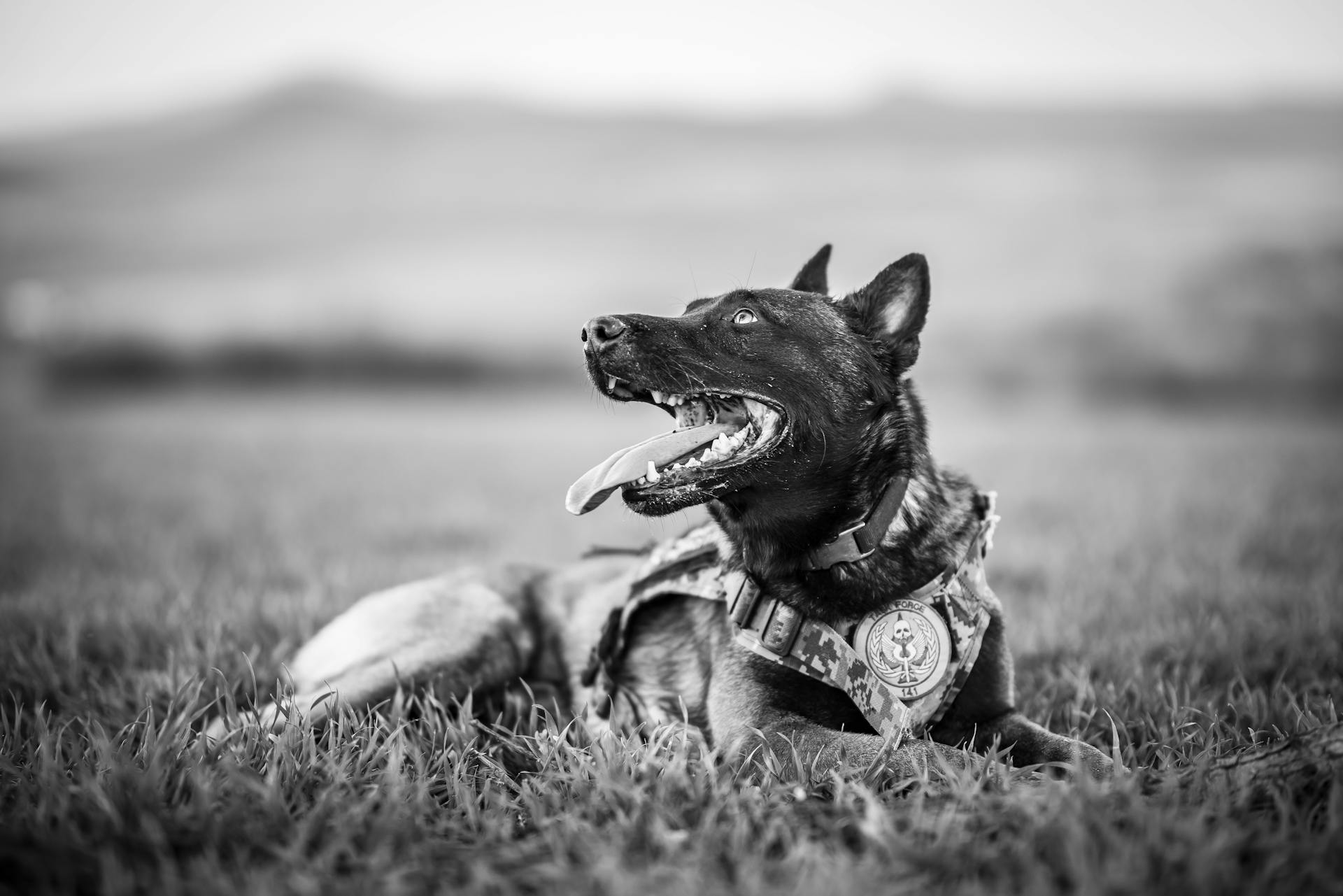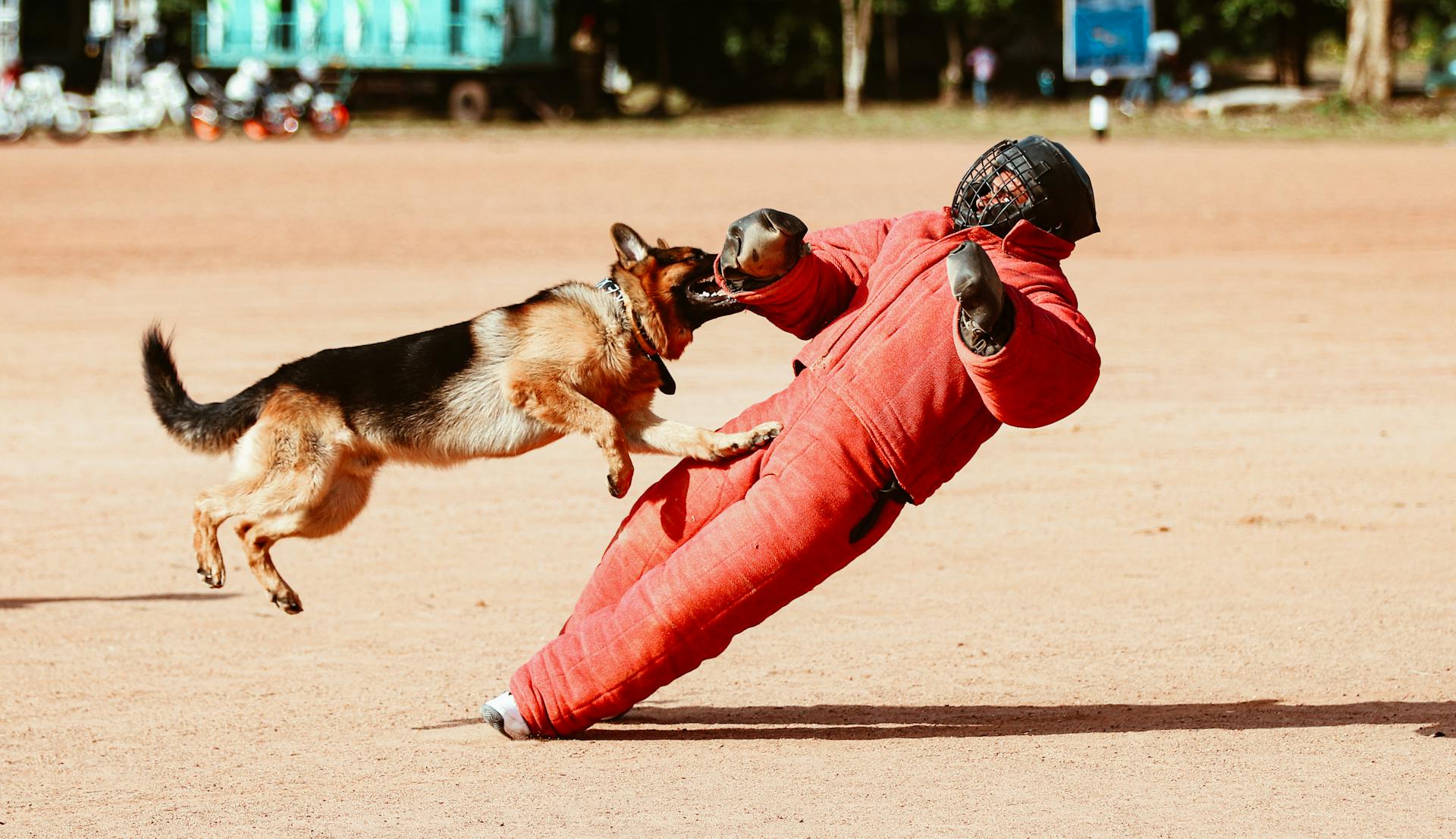
Police dogs are trained to serve and protect, but the reality is that they can also be a threat to public safety. According to a study, police dogs bite an average of 250 people per year.
These incidents are often serious, with some resulting in severe injuries and even fatalities. In fact, one study found that between 2005 and 2019, police dogs were responsible for 15 human deaths in the United States.
The statistics are sobering, but they also highlight the need for better training and management of police dogs. By understanding the risks and taking steps to mitigate them, we can work towards a safer relationship between humans and police dogs.
Police Dog Attacks
Police dog attacks are a serious issue that often goes unreported. They are responsible for approximately 3,600 emergency room visits each year.
The severity of the problem is often underestimated, but the statistics tell a different story. Patrol dog bites more resemble shark bites than nips from family pets.
Most victims of police dog bites were unarmed, not dangerous, or not suspects at all. This raises concerns about the use of force and the training of police dogs.
In many cases, handlers must physically pull the dogs off the victims, resulting in more serious injuries. The dogs will not stop biting despite desist orders from their handlers.
Though rare, bites from patrol dogs can result in fatal injuries. This is a stark reminder of the potential consequences of police dog attacks.
Here are some key statistics on police dog attacks:
- 3,600 emergency room visits each year
- More hospital visits each year than any other use of force by police
- Most victims were unarmed, not dangerous, or not suspects at all
- Dogs will not stop biting despite desist orders from their handlers
- Fatal injuries are a rare but possible consequence
Consequences and Aftermath
Police dogs attacking can have severe consequences for both humans and animals involved. The severity of injuries can vary greatly, from minor cuts and bruises to life-threatening wounds.
In some cases, the injuries can be so severe that they require immediate medical attention. According to data, approximately 20% of police dog attacks result in serious injuries.
Police officers and their dogs are also at risk of being injured or killed in the line of duty. In a recent incident, a police dog was fatally injured while attempting to apprehend a suspect.
The aftermath of a police dog attack can be emotionally traumatic for all parties involved, including the victims, their families, and the officers involved. The incident can also lead to a loss of trust between law enforcement and the community.
The consequences of police dog attacks can be costly, both financially and emotionally. In one case, a family was awarded $1 million in damages due to a police dog attack that left their child severely injured.
When Police Dogs Attack
Police dogs are trained to assist law enforcement, but they can also be a danger to the public. Approximately 3,600 emergency room visits each year are attributed to police dog bites.
These bites are often severe, causing more hospital visits than any other use of force by police. In many cases, the victims are unarmed, not dangerous, or not suspects at all. This highlights the issue of police dog misuse.
Some police dogs will not stop biting even when ordered to desist by their handlers. In these situations, handlers may have to physically pull the dogs off the victims, resulting in more serious injuries. Fatal injuries can also occur, although this is rare.
If this caught your attention, see: Dog Attack Victims
If you or a loved one has been a victim of excessive force from a K9 unit, you may be able to file a civil suit for damages against the precinct. The courts will consider several factors when determining whether a dog used excessive force, including the severity of the alleged crime, the suspect's level of threat, and the severity of the injuries sustained.
The courts will also consider whether the officers issued a warning to the suspect before deploying the K9 unit, and for how long the dog maintained its hold on the victim. If the dog bit repeatedly or for an extended period, this could be considered excessive force.
A fresh viewpoint: Will Hawks Attack Small Dogs
Accountability and Scrutiny
Police dogs are trained to respond to specific commands, but sometimes they attack without provocation, raising questions about their training and handling.
The lack of standardized training protocols and inconsistent reporting of dog bites make it challenging to hold officers accountable for their actions.
If this caught your attention, see: K9 Unit Training
In some cases, police departments have policies in place for reporting dog bites, but these policies are not always followed.
The public's trust in law enforcement is eroded when police dogs attack civilians without justification.
Investigations into dog bites are often hampered by the fact that police departments may not release information about the incidents.
Aggression and Breeds
Dog owners are generally split into two camps, with some believing that no dog breed is at fault for aggressive behavior since they think it's a result of individual circumstances and upbringing.
Some believe that certain breeds are more prone to aggression due to their history and instincts.
This notion is not entirely unfounded, as some studies suggest that breeds with a history of guarding or fighting, such as the Pit Bull, have a higher incidence of aggression.
However, it's essential to remember that any dog, regardless of breed, can become aggressive if not properly trained or socialized.
Ultimately, a dog's behavior is shaped by its environment and upbringing, not just its breed.
If this caught your attention, see: Dog Breeds Watch Dogs
Canine Attack Statistics
Canine Attack Statistics are a stark reminder of the dangers posed by even the most well-trained police dogs. Approximately 3,600 emergency room visits occur each year due to police dog attacks.
Patrol dog bites are often severe, causing more hospital visits than any other use of force by police. This is because their bites more closely resemble shark bites than the nips from family pets.
Most victims of police dog bites were unarmed, not dangerous, or not suspects at all. This raises questions about the criteria used to determine when a unit can attack.
In many cases, handlers must physically pull the dogs off the victims, resulting in more serious injuries. This highlights the importance of proper training and control over police dogs.
Fatal injuries from patrol dog bites are rare but do occur. This is a sobering reminder of the potential consequences of police dog attacks.
Aggression in Dog Breeds
Dog owners are generally split into two camps. Some believe that no dog breed is at fault for aggressive behavior since individual personalities and temperaments play a much larger role.
Aggressive behavior in dogs can be influenced by genetics, but it's not the sole determining factor. Research shows that breed alone is not a reliable indicator of a dog's potential for aggression.
Some people believe that certain breeds are more prone to aggression, but the truth is more nuanced.
You might like: Most Popular Police Dogs
Police Dogs as a Tool
Police dogs are trained to be highly effective tools for law enforcement. They are often used to track and locate suspects, making them a valuable asset in investigations.
Police dogs are trained to detect a variety of substances, including narcotics and explosives. Their keen sense of smell allows them to sniff out these substances even in small quantities.
Police dogs are also used to patrol and secure areas, providing an extra layer of safety and security. This can be especially important in high-crime areas or during large events.
Police dogs are trained to respond to a range of commands, allowing them to be deployed in a variety of situations. They can be trained to perform tasks such as searching for missing people or detecting specific scents.
The bond between a police dog and its handler is incredibly strong, built on trust and communication. This partnership allows the dog to perform at its best and respond to situations effectively.
Sources
- https://www.stoneinjurylawyers.com/faqs/what-happens-police-dog-attacks-you/
- https://daily.jstor.org/the-police-dog-as-weapon-of-racial-terror/
- https://phr.org/news/california-police-attack-dogs-cause-permanent-injuries-disfigurement-and-death-phr-expert-medical-opinion/
- https://www.usatoday.com/story/news/nation/2023/10/17/indiana-police-dog-choked-wisconsin-man-arrested/71213149007/
- https://www.theguardian.com/us-news/2023/jul/28/police-dog-attack-black-man-ohio
Featured Images: pexels.com


